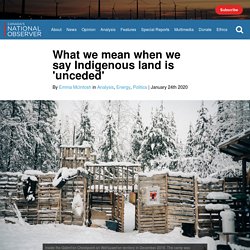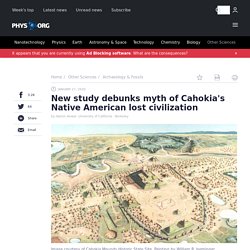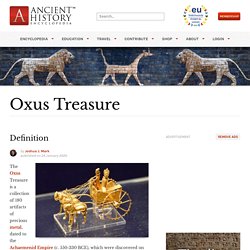

Patara: The cradle of civilizations. What we mean when we say Indigenous land is 'unceded' You might be living on unceded land.

To be more precise: the Maritimes, nearly all of British Columbia and a large swath of eastern Ontario and Quebec, which includes Ottawa, sit on territories that were never signed away by the Indigenous people who inhabited them before Europeans settled in North America. In other words, this land was stolen. (It's worth noting that territories covered by treaties also weren't necessarily ceded — in many cases, the intent of the agreements was the sharing of territory, not the relinquishing of rights.) What to do about it, however, is deeply complex — and legal questions about how to handle claims to unceded land have become a subject of public discussion as members of the Wet’suwet’en Nation in northeastern British Columbia have reoccupied their territory and attempted to block the Coastal GasLink pipeline. Similar cases over Indigenous land titles are moving through courts across Canada. “Coastal GasLink is trespassing, those cops are trespassing.
Video: The history of ‘barongsai’ in Indonesia. New study debunks myth of Cahokia's Native American lost civilization. A University of California, Berkeley, archaeologist has dug up ancient human feces, among other demographic clues, to challenge the narrative around the legendary demise of Cahokia, North America's most iconic pre-Columbian metropolis.

In its heyday in the 1100s, Cahokia—located in what is now southern Illinois—was the center for Mississippian culture and home to tens of thousands of Native Americans who farmed, fished, traded and built giant ritual mounds. By the 1400s, Cahokia had been abandoned due to floods, droughts, resource scarcity and other drivers of depopulation. But contrary to romanticized notions of Cahokia's lost civilization, the exodus was short-lived, according to a new UC Berkeley study.
The study takes on the "myth of the vanishing Indian" that favors decline and disappearance over Native American resilience and persistence, said lead author A.J. White, a UC Berkeley doctoral student in anthropology. More information: A.J. This document is subject to copyright. Oxus Treasure. The Oxus Treasure is a collection of 180 artifacts of precious metal, dated to the Achaemenid Empire (c. 550-330 BCE), which were discovered on the north bank of the Oxus River near the town of Takht-i Sangin in Tajikstan between 1876-1880 CE (commonly given as 1877 CE).

The bulk of the collection is presently housed in the British Museum, London. The treasure is thought to have once been owned by a temple – quite possibly a nearby temple – which was looted and the hoard then buried to be retrieved later. Conversely, it is possible the treasure was taken from a temple and hidden to prevent just such looting. Jōmon Japan: Prehistoric Culture and Society. Although the people of the prehistoric Jōmon period were hunter-gatherers, they had a highly developed society and culture, much of which was passed on to later residents of the Japanese archipelago.

Japan’s ancient Jōmon culture is defined as belonging to a period stretching from the emergence of pottery, around 16,500 years ago at the earliest, to the beginning of dry-field rice farming between 3,000 and 2,400 years ago. It is the general name given to the culture of people who began to live settled lives in the Japanese archipelago during this time, engaging in hunting, gathering, fishing, and cultivation, and making use of many different plants and animals, as well as earthenware and stone tools.
A Complex Society As polished stone tools were in use in the Jōmon period, it can be placed at the Neolithic stage. Unlike the Neolithic societies in Europe and Western Asia at that time, however, there was no organized agriculture or raising of livestock. Pacific Ocean’s Warm “Blob” Killed a Million Seabirds in One Year. Germany could have won key World War II battle if they made these tactical changes, study says. A startling new study suggests that Germany could have won a key battle in World War II and perhaps changed the outcome of the war if they had made a few small strategic changes.

Researchers at the U.K.'s University of York created a computer model using a technique known as "weighted bootstrapping" and determined that the Battle of Britain could have been won by the Germans if they attacked the Brits immediately after Winston Churchill delivered his famous "Finest Hour" speech on June 18, as opposed to July 10, more than three weeks later. One other grave mistake was not continuing the attack on British airfields after the initial blow on Aug. 13, 1940.
A Dornier 17Z of the Luftwaffe flying low over the English countryside. (RAF Museum) Vikings left Greenland because they over-hunted walruses, research claims. The Roman Empire vs. The Mongol Empire At Their Respective Peaks. Map created by reddit user GalXE106 The map above shows how big the Roman and Mongol Empires were at their respective peaks.

The Mongols had the world’s largest contiguous land based Empire in history (and the second largest overall after the British), but just how much bigger was it than Rome? Mongol Empire: 24 million km2 (9.27 million mi2), 17.81% of world land area in 1270 or 1309 Roman Empire: 5.0 million km2 (1.93 million mi2), 3.71% of world land area in 117.